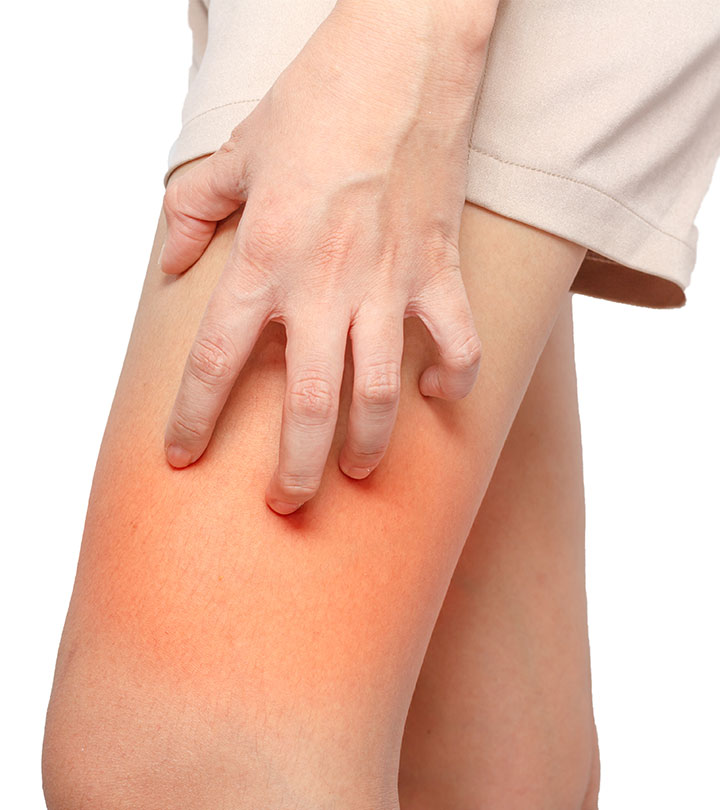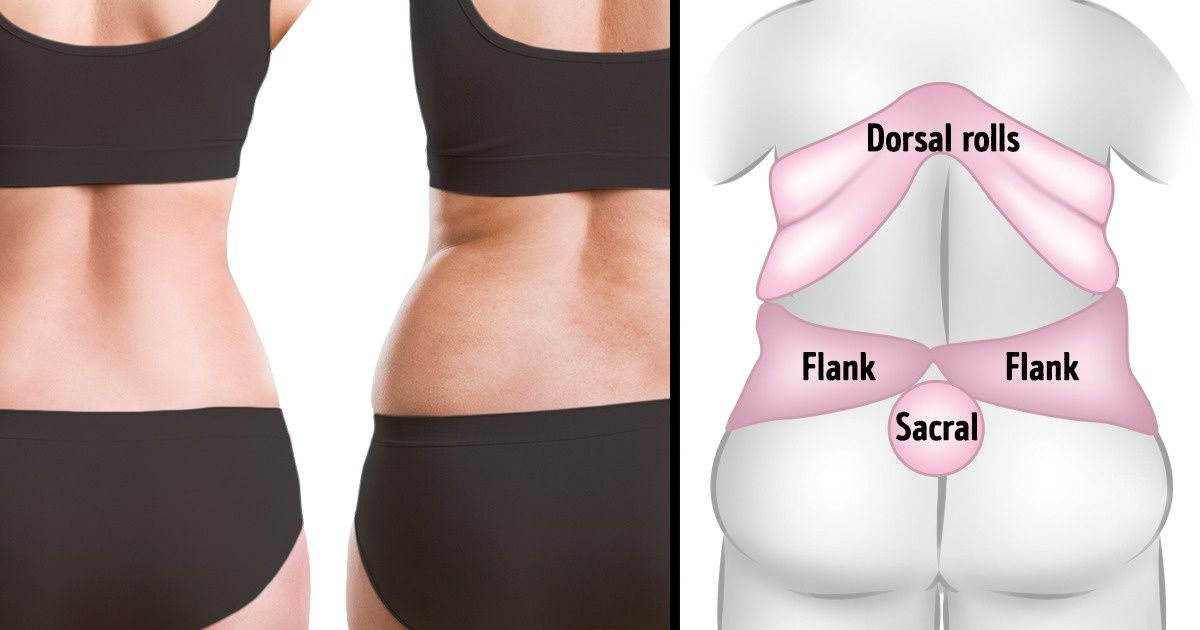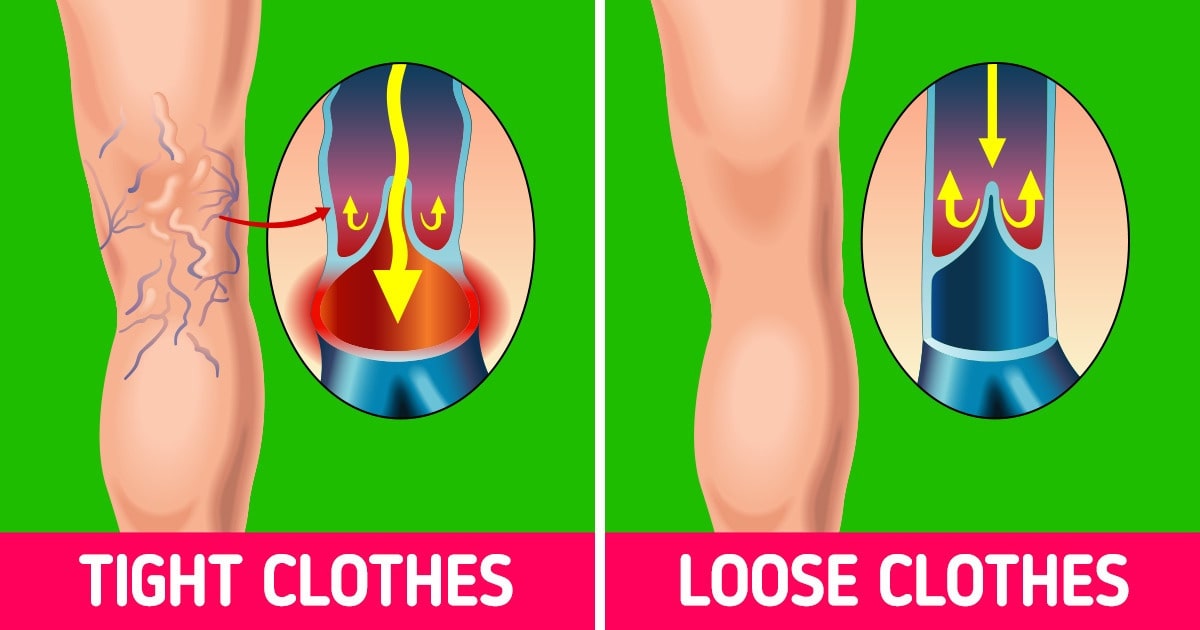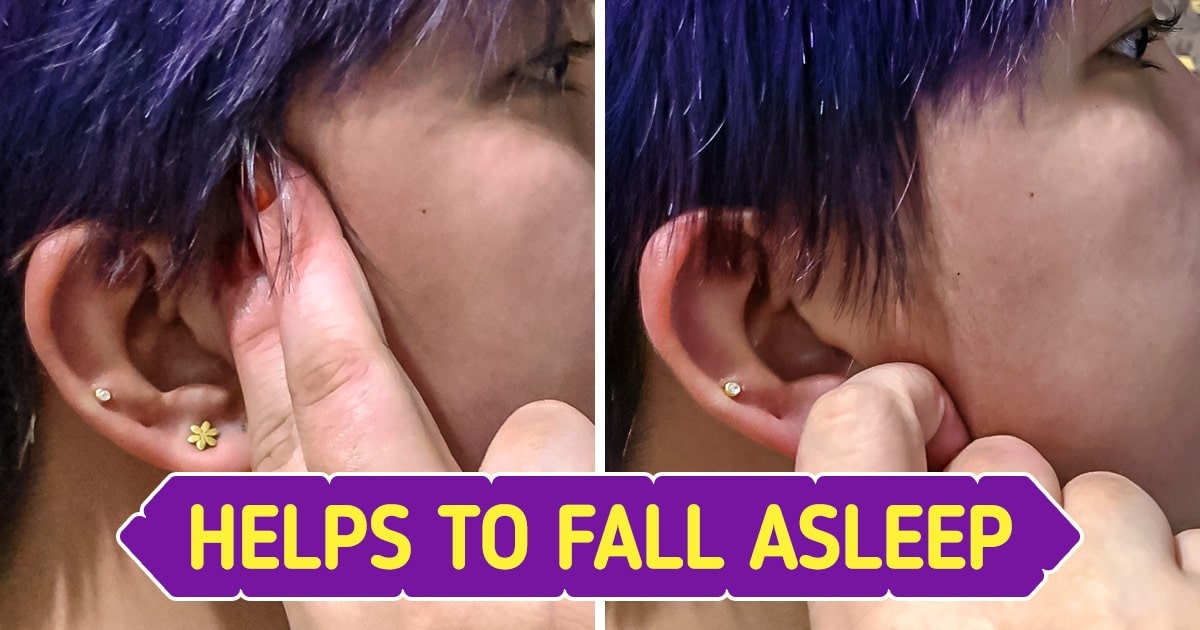Chicken skin, medically known as keratosis pilaris, is a common skin condition that affects millions worldwide. Characterized by small, rough bumps—often on the arms, thighs, or buttocks—this condition can be both a cosmetic nuisance and a source of self-consciousness. While keratosis pilaris is harmless, many people seek effective ways to reduce its appearance for smoother, healthier skin.
Understanding what causes chicken skin is the first step toward addressing it. Various factors may contribute to the development of this condition, including dietary habits, skincare routines, and lifestyle choices. In this comprehensive guide, we delve into five key causes of chicken skin and offer actionable tips on how to get rid of it. With evidence-based strategies and insights from trusted sources such as Healthline and Mayo Clinic.
Insufficient Dietary Fats and Nutrient Deficiencies: A Hidden Cause of Chicken Skin

One often-overlooked cause of chicken skin is a lack of essential dietary fats and nutrients. Fat plays a crucial role in maintaining healthy skin by helping to lock in moisture and support cell regeneration.
The Role of Essential Fats in Skin Health
Essential fatty acids, such as omega-3 and omega-6, are vital for a well-functioning skin barrier. Without adequate dietary fats, your skin may become dry and prone to irritation, which can exacerbate conditions like keratosis pilaris. Consuming foods rich in healthy fats—such as avocados, nuts, seeds, and fatty fish—can improve skin hydration and overall texture.
Nutrient Deficiencies and Skin Health
In addition to fats, vitamins A, C, and E, as well as zinc, are important for skin repair and regeneration. A deficiency in these nutrients can lead to a weakened skin barrier, making it more susceptible to roughness and bumps. Incorporating nutrient-dense foods or supplements, as recommended by a dermatologist, can help alleviate these issues. For further reading on the importance of dietary fats in skin health, check out Healthline’s nutrition guide.
Harsh Body Scrubs and Over-Exfoliation: Worsening Chicken Skin
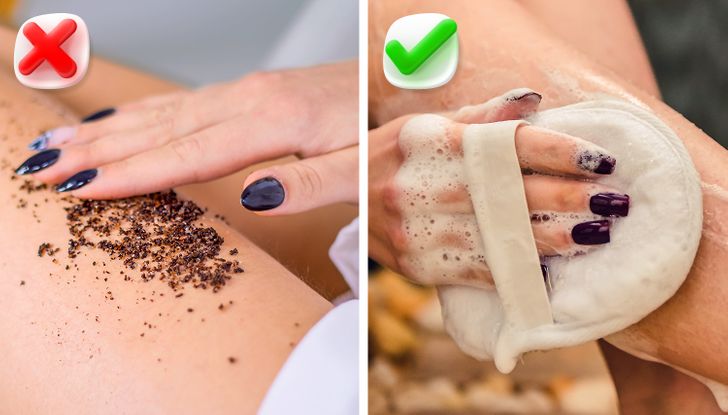
Exfoliation is a common step in many skincare routines, but overdoing it or using harsh body scrubs can do more harm than good when it comes to chicken skin.
The Impact of Over-Exfoliation
While exfoliating can remove dead skin cells and promote smoother skin, excessive or overly abrasive scrubbing may irritate the skin, leading to increased inflammation and worsening of keratosis pilaris. Instead of improving the condition, harsh scrubs can strip the skin of its natural oils, resulting in dryness and further irritation.
Gentle Exfoliation Techniques
For those looking to improve their skin texture, it’s important to opt for gentle exfoliation methods. Look for products with fine particles or use chemical exfoliants like lactic acid or glycolic acid, which are less likely to cause irritation while still promoting cell turnover. Dermatologists often recommend using exfoliants only 1-2 times per week to prevent over-exfoliation. Learn more about safe exfoliation practices from WebMD’s skincare advice.
The Impact of Hot Showers on Chicken Skin: Why Temperature Matters
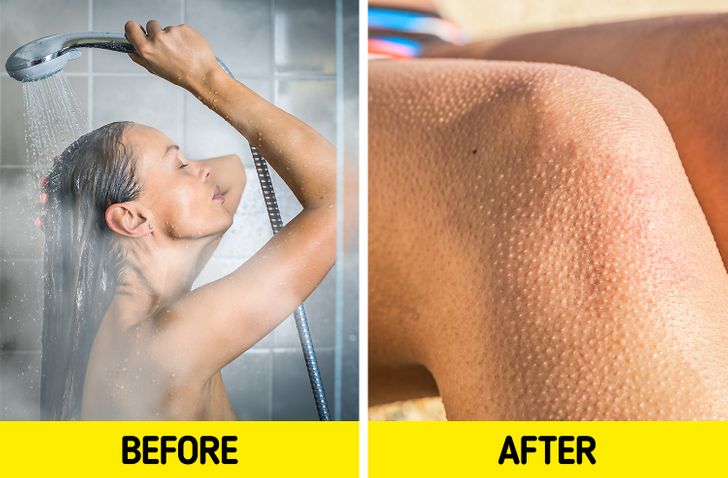
Hot showers may feel relaxing, but they can be detrimental to your skin’s health, especially if you suffer from chicken skin.
How Hot Showers Affect Your Skin
Exposure to hot water strips the skin of its natural oils, leading to dryness and irritation. When the skin becomes dehydrated, it may produce extra keratin—a protein that can clog hair follicles and contribute to the formation of chicken skin. To maintain optimal skin moisture and integrity, it’s advisable to use lukewarm water instead of hot water.
Tips for Temperature-Controlled Showers
- Lukewarm Water: Use water that is comfortably warm rather than hot to help preserve your skin’s natural moisture barrier.
- Shorter Duration: Limit your shower time to prevent prolonged exposure to heat, which can further dehydrate the skin.
- Moisturize Immediately: After showering, gently pat your skin dry and apply a fragrance-free moisturizer to lock in hydration.
For a deeper understanding of how water temperature affects skin health, visit Mayo Clinic’s skincare recommendations.
Excessive Dairy Consumption: Could It Be Contributing to Your Chicken Skin?
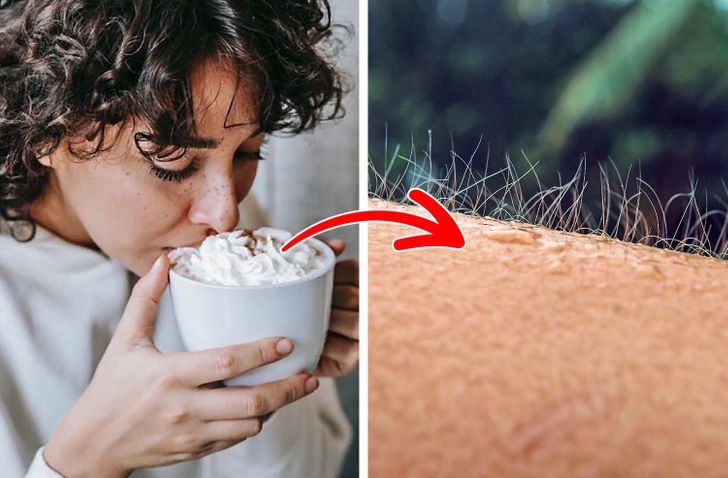
Dietary habits can have a profound impact on skin health, and for some individuals, excessive dairy intake may be a contributing factor to chicken skin.
Dairy and Inflammation
Some studies suggest that dairy products can trigger inflammatory responses in certain people, potentially exacerbating skin conditions like keratosis pilaris. Dairy’s hormones and proteins might interact with your body’s natural processes, leading to increased oil production and clogged pores.
Balancing Dairy in Your Diet
If you suspect that dairy is affecting your skin, consider moderating your intake or switching to dairy alternatives such as almond milk or oat milk. Additionally, ensuring that you’re consuming anti-inflammatory foods rich in antioxidants—like leafy greens, berries, and fatty fish—can help balance your diet and support overall skin health.
For more insights on how dairy affects the skin, check out Healthline’s guide on dairy and inflammation.
Perfumed Soaps and Irritant Ingredients: How They Trigger Chicken Skin Breakouts
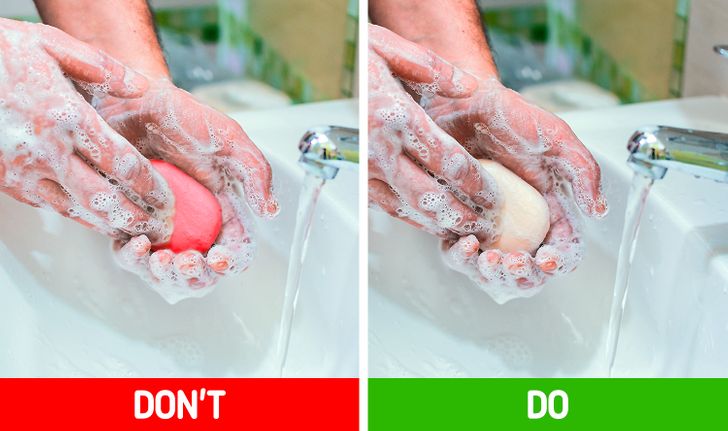
The type of soap and skincare products you use can have a significant impact on your skin’s condition. Perfumed soaps and products with harsh chemicals can irritate the skin and exacerbate chicken skin.
The Problem with Perfumed Soaps
Soaps and cleansers that contain synthetic fragrances and irritant chemicals can disrupt the skin’s natural pH balance. This disruption may lead to increased dryness, irritation, and inflammation, which can worsen the appearance of keratosis pilaris. For sensitive skin, using products that are free from artificial fragrances and harsh additives is crucial.
Choosing the Right Skincare Products
- Fragrance-Free Options: Opt for unscented or naturally scented products that do not contain harsh chemicals.
- Mild Cleansers: Look for cleansers formulated for sensitive skin that maintain the skin’s natural moisture barrier.
- Dermatologist-Recommended Brands: Consider products that have been clinically tested and recommended by dermatologists for treating conditions like chicken skin.
For additional recommendations on choosing skin-friendly products, explore WebMD’s skincare tips.
Additional Strategies for Managing Chicken Skin
While addressing the primary causes of chicken skin is essential, incorporating complementary strategies into your daily routine can further improve your skin’s appearance.
Consistent Moisturizing
Maintaining a consistent moisturizing routine is one of the most effective ways to manage chicken skin. Use a thick, emollient moisturizer that contains ingredients like urea or lactic acid, which help exfoliate and hydrate the skin simultaneously. Regular application—especially after bathing—can significantly reduce dryness and improve skin texture.
Regular Exfoliation with Caution
Incorporate gentle exfoliation into your routine once or twice a week. Use products designed specifically for sensitive skin to avoid irritation. This helps remove dead skin cells and prevents the buildup of keratin that can clog pores.
Lifestyle Adjustments
Apart from topical treatments, consider making broader lifestyle changes. Ensure you’re getting enough sleep, managing stress, and eating a balanced diet rich in essential vitamins and minerals. These factors collectively contribute to overall skin health and can help mitigate the effects of chicken skin.
For more detailed lifestyle tips for managing skin conditions, visit the American Academy of Dermatology.
Conclusion
Chicken skin, or keratosis pilaris, may be a persistent condition, but understanding its underlying causes is the first step toward effective management. By addressing factors such as insufficient dietary fats, harsh exfoliation practices, hot showers, excessive dairy consumption, and the use of perfumed soaps, you can take control of your skincare routine and work toward smoother, healthier skin.
Implementing the tips discussed—from optimizing your diet with essential fatty acids and anti-inflammatory foods to choosing gentle skincare products and maintaining proper hydration—will not only help reduce the appearance of chicken skin but also improve your overall skin health. Remember, consistency is key. Incorporating these changes gradually into your daily routine can yield long-term benefits and boost your confidence.
For personalized advice, consider consulting with a dermatologist who can recommend treatments tailored to your unique skin type and condition. By staying informed and proactive, you can effectively manage keratosis pilaris and enjoy the benefits of a balanced, nourishing skincare routine.
Embrace these strategies and experience the transformation to smoother, clearer skin. For more expert advice and scientifically backed information, refer to reputable sources like Healthline, Mayo Clinic, and WebMD.
Preview photo credit Shutterstock.com


